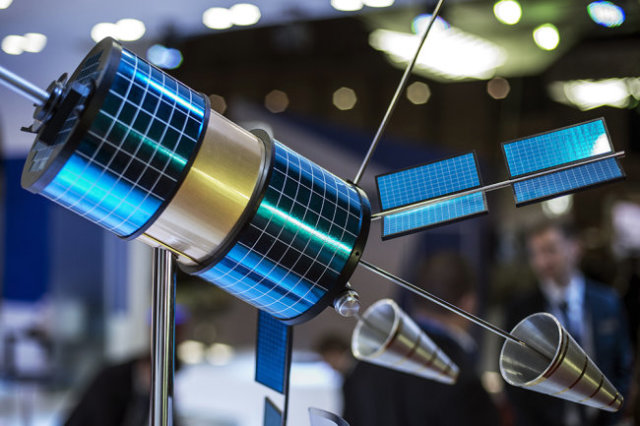Dmitry Rogozin, CEO of Roscosmos, said that all three Gonets-M communications satellites launched on Thursday were put into their calculated orbits and taken over.
The Soyuz-2.1 b rocket with Gonets-M communications satellites and a device in the interests of the Ministry of defense launched from the launch pad N 3 of the Plesetsk State test cosmodrome in the Arkhangelsk region. The launch was carried out by a combat crew of the VKS Space forces.
The military said that the device they own is a service platform for the ERA-1 nanoscale spacecraft. It is designed for testing advanced micro-devices and Microsystems for orientation and astrogation.
It is already known that spacecraft, launched in the Ministry of defense, assigned a serial number "Kosmos-2548", it "established and maintained a reliable telemetry link, its onboard systems are functioning normally".
Of greatest interest satellites "Gonets-M". Their history is interesting. Initially, they were developed in the interests of military intelligence. Their customer in the early 1980s was the GRU.
The orbital group of Messengers was supposed to provide high-quality and well-protected communication of the intelligence center with its subscribers located anywhere in the world.
Satellites and all the infrastructure associated with them turned out to be so successful and reliable that the military still uses them.
Moreover, they did not become too secretive and offered to create a conversion version of "Messenger-M" in the interests of civilian users.
Today, the satellites of this system transmit telex and Fax messages, send e-mail, collect data from various types of environmental sensors, as well as security and fire alarms, and work in the GPS/GLONASS coordinate system.
Gonets-M satellites allow you to monitor any type of transport, as well as provide mobile personal communication, operational control and management, regardless of the location of the object.
After the successful launch and commissioning of three satellites at once, the Gonets-M orbital group now consists of 15 spacecraft that provide stable communication on a global scale.
Sergey Ptichkin

